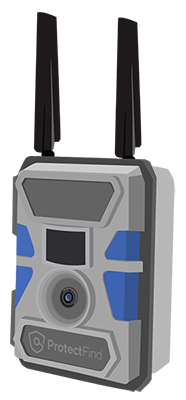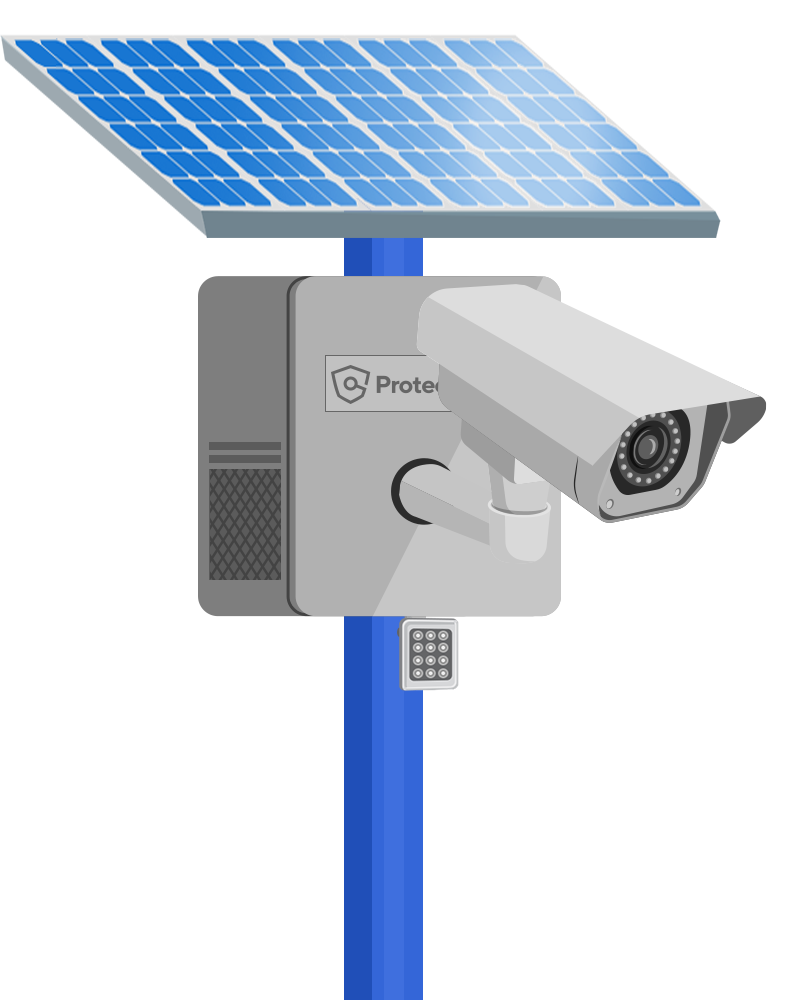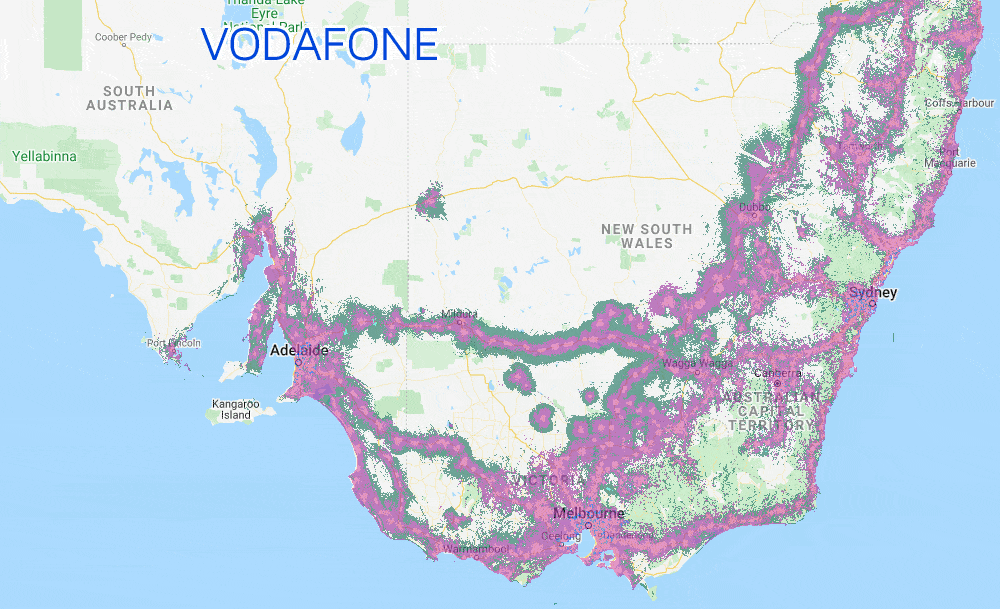Have you ever been worried about the safety of your property when you're not there? Is the location difficult to get power and internet to? A 4G security camera might be the right solution.
This article discusses what a 4G security camera is, how it works, the different types available, and what sim card providers to use.
by Bryce Whitty
Bryce is a registered Security Advisor who started ProtectFind to help people get the right security system for their goals.
1
What is a 4G Camera?
4G security cameras (sometimes known as just "sim card security cameras") are a good choice for people who want to remotely monitor their home or business in situations where getting power and traditional household internet to the location is not viable. Some common uses for a 4G camera are security alerts when something happens—observing wildlife and construction site time lapses.
Popular install locations are:
- Farms - Livestock, watering holes etc...
- Horse stables
- Backyard sheds
- Construction sites
- Boats and docks
- Forests and other sizeable private property
4G can easily be confused with 4K as they are both relevant to security cameras.
- "4G" stands for "fourth generation of mobile networks", which is how it connects to the internet
- "4K" is an image resolution and will produce a very high-quality image
2
How Does a 4G Sim Card Security Camera Work?
Security cameras with a sim card make use of the mobile phone network towers just like your smartphone would, giving them a lot of versatility on the location as long as you have a decent 4G signal.
Like a smartphone, the sim card in your 4G camera would require a cellular data plan attached to it.
4G cameras that use batteries use "on-motion detection", where they don't record anything until it detects motion with the PIR motion sensor. It does this to conserve battery life, but the downside is that they can sometimes miss events if they didn't detect the motion in the first place.
The camera will send you a short video clip or picture of the event via SMS, email, or a push notification via its 4G internet connection. It will also save this event to its local storage using an internal SD card.

On most cameras, you can remotely access them and use them for live streaming for a short time.
If the camera makes use of batteries, live streaming will consume the camera's batteries very quickly, so I only recommend that you do so in short bursts.
The cameras battery life varies based on how many events happen in a day, the motion detection sensitivity, and even the temperature of the area it is operating in. Some 4G cameras have an optional solar panel that can be installed to extend the time between charges or prevent the need to charge entirely.
Most battery powered cameras make use of a PIR motion sensor which detects the heat energy in the surrounding environment, so it will pick up both humans and animals. Some only use PIR detection which make them a bit "dumber" about what it is detecting, while others will only use the PIR to wake up the camera and then use its smarter AI to determine what it is looking at.
3
Types of 4G Camera in Australia
Trail Cams
Trail Cams, sometimes known as Hunting Cameras or Wildlife cameras, are usually in a self-contained box, often with a camouflage print on them. This makes them perfect for hiding on a tree or similar. Most of them will have local storage and save their footage to a Micro SD card. Solar panels are often an optional addon for trail cams.
They will not record continuously, but rather use "on motion" detection using a PIR sensor. They can often record in both the cloud and a local Micro SD card.
An important feature that many (but not all) trail cameras have compared to regular security cameras is they have invisible or "low glow" infrared night vision. Most infrared security cameras will emit a red glow from their IR lights at night, which doesn't exactly blend in well when hidden on a tree.
These cameras are usually designed to monitor very remote areas or watch animals. They can often work on 3G as well as 4G LTE. When configured correctly, they can be used as number plate cameras.

Consumer Grade 4G Cameras
We have covered what makes a camera "consumer-grade" in another article, but they are usually inexpensive (sub $300), run on a battery and possibly have a solar panel.
They will use on-motion detection and often have cloud storage for the motion events. The image quality is usually around 1080p or 4 megapixels (2K) and have a live feed option.
They do allow you to avoid wiring hassles, but have many of the problems that come with wireless-battery cameras.
These are a good option for large properties and some micro-farms, but may not be robust enough for working environments where it gets very hot and dusty. Their night vision tends to have less range than prosumer-grade options.

Professional Grade 4G Cameras with Solar Panels
These are often mounted on a tall metal pole, sometimes they have mains power, but usually use a large external solar panel and a rechargable battery for continuous power.
Professional grade solar powered cameras are designed to endure a harsh working environment and are commonly used as farm security cameras. They often have a high IP Rating to protect them from dust and water.

4G Building Site Camera with Solar Panels
A 4G Building Site Camera (sometimes known as a Site Camera or Construction Camera) can be as simple as a 4G PTZ camera mounted on a pole, or literally have all the "bells and whistles".
They can have sirens, flood lights, and strobe lights that activate on motion detection so scare off would be burglars. They may also have supplimental infrared lights to help extend the cameras night vision.
Many also have a time lapse feature which is a great way to show the progress of a project over time.

Wired Camera Network with 4G Capable Modem
While not technically a 4G camera, another common setup is to have multiple wired cameras connected to a local Network Video Recorder.
The cameras will be wired throughout the home or business, and store the footage on the NVR appliance. However, the NVR will be connected to a 4G capable modem to get the notifications out to the internet, as well as allowing the owner to log and and view the cameras or footage remotely.
This is common in businesses that need multiple cameras and have no wired internet connectivity like ADSL or NBN.
4
4G Data Providers for Security Cameras in Australia
Sim card security cameras are commonly used where power and internet are not easily available, which often means rural properties. However, you need to be careful with the data provider you choose, as not all telecom providers have good rural coverage. Without 3G or 4G data coverage, it has no way to alert you of an intruder, and you won't be able to live view it.
Most of the information about 4G cameras on the internet is American centric, whereas the whole focus of this site is about security cameras in Australia, so we are going to talk about Australian only data providers.
4G Cameras on Telstra vs Vodafone
Here is an example between Telstra's 3G/4G coverage and Vodafone's. Telstra has coverage deep into the country, whereas Vodafone just covers the cities and follows the major highways.

While Telstra has the most extensive cellular network in Australia, their plans are not the most cost-effective. Smaller providers offer more cost-effective plans that would suit a 3G/4G camera and usually piggyback on a larger providers network.
While technically most mobile providers should work with a 4G camera, it is against the terms of service of many of them to use their sim card in a security camera. They consider security cameras "mission critical", so they disallow the use of regular sim cards in security cameras, alarms, and medical alert devices.
Here are some providers worth a look:
- Aldi Mobile - Predominantly use the Telstra network, but not all of it. [Coverage Map]
- Betterlife - Predominantly use the Telstra network, but not all of it. [Coverage Map]
- Felix Mobile - Uses the Vodafone network [Coverage Map]
Be careful with cellular security cameras purchased in other countries, as their 3G/4G/LTE bands may run on a different frequency to the ones used in Australia.
5
What’s Next?
Hopefully this gives you a better understanding of the options available for 4G Sim card cameras. If you still need help understanding security cameras in general, check out our Australian security cameras buyers guide.
If you have any questions not covered in this article, you can get in touch here, and we’d be happy to answer them.
